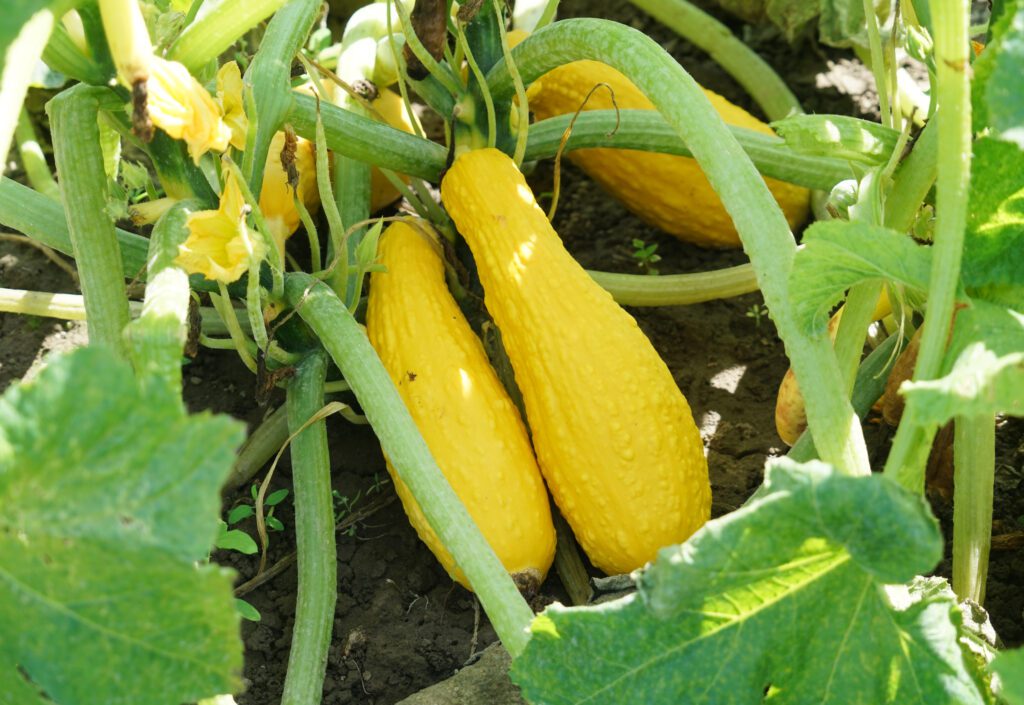by RYAN MILEJCZAK
Sponsored by Farm Credit of Central Florida
It’s officially fall, and that means it’s time for delicious autumn veggies like eggplant, sweet potatoes, and — perhaps best of all — squash. Squash comes in a variety of forms, and many of them are grown right here in Florida. In fact, with a total of around 85 million pounds produced per year, Florida ranks fourth in the nation behind Michigan, California, and New York.
Squash refers to any member of the genus Cucurbita in the family Cucurbitaceae, with some of the common species grown being:
- Cucurbita maxima, which includes varieties like buttercup squash
- Cucurbita moschata, which includes varieties like butternut squash
- Cucurbita pepo, which includes many of the most common squashes, such as pumpkins, acorn squash, and zucchini
Many other members of the Cucurbitaceae family are also commonly cultivated and eaten. These include watermelons (in the genus Citrullus), cucumbers (in the genus Cucumis), and the chayote (in the genus Sicyos), among others. Yet other members of this family see other uses, such as the Luffa, dried and used as a sponge, and popular garden plants such as the silver dollar vine.
Squashes originated in the Americas, where they were one of the main crops grown by indigenous people. They are one of the “three sisters” of indigenous agriculture, along with corn and beans, and the earliest evidence of their domestication dates back at least 8,000 years. The English word “squash” is derived from the Narragansett word askutasquash, meaning “a green thing eaten raw.”
The fruit of the squash plant is a type of modified berry known as a “pepo.” In addition to the pepo,the young greens and flowers of the squash plant are edible. The flowers in particular are popularly eaten in countries such as Mexicos, where “flor de calabaza” can be found as a filling for foods like quesadillas. The seeds of many squash, especially pumpkins, are also edible, and are commonly known as pepitas.
While the exact nutritional value depends on the squash variety, all squash are a nutritious part of any meal. Generally speaking, they’re a great source of Vitamins C and B6, riboflavin, fiber, and carotenoids like beta-carotene.
Squashes can be broadly divided between summer squash and winter squash. Summer squash are squashes which are harvested when the fruit is still young and tender. They have a shorter shelf life, but tend to require less cooking. These include varieties such as yellow squash and zucchini. These squash varieties can be found year round, but you’ll find the best variety and quality between October and May
Winter squash, meanwhile, are squashes that are harvested once fully mature. These have a hard, tough skin, allowing them to be stored for months on end. Examples of common winter squashes include pumpkins and acorn squash.
Both summer and winter squash are cultivated here in Florida. The most common summer squash grown are zucchini, yellow squash, and pattypan squash. For winter squashes, the most common varieties are acorn squash, butternut squash, spaghetti squash, and a small amount of Cuban squash.
Typically, squash is planted between August 15 and April 1, and harvested between September and July. Squash thrives in warm conditions, making it ideal for growing in the Florida climate.
Most Florida squash is grown in Colier, Dade, Hardee, Hillsborough, Lee, and Manatee counties, totalling 9,600 acres of squash planted statewide. For the 2023 growing season, 847,400 CWT of squash were produced in Florida, amounting to a total production value of $44,911,000.
So, next time you’re at the grocery store or the farmer’s market, pick yourself up some fresh Florida squash. There are so many varieties to choose from, and no matter which one you go with, you’re getting a delicious, nutritious, and locally grown treat.

